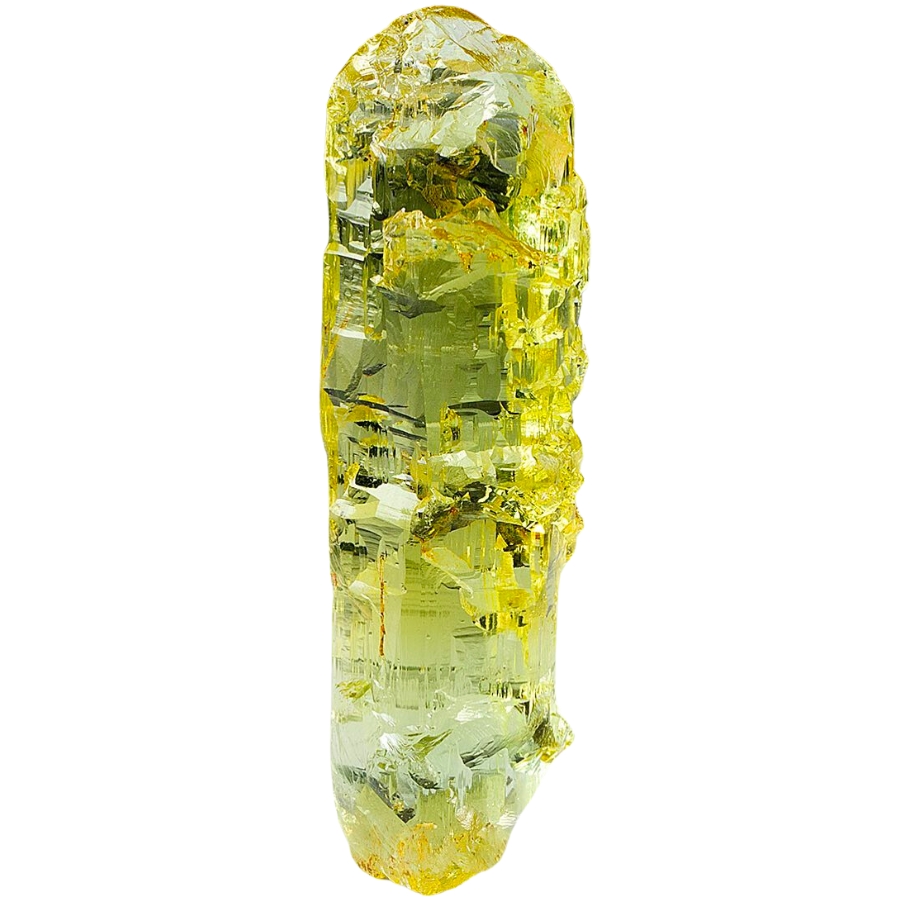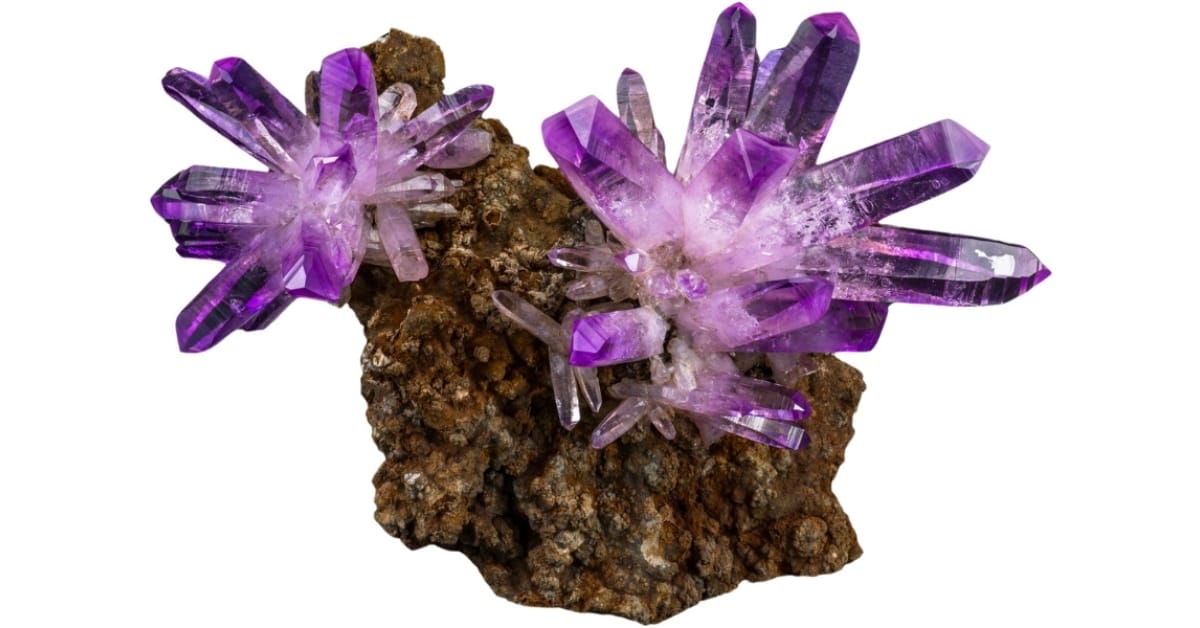Isn’t it incredible to think about the most beautiful and fascinating natural treasures? What’s even more awesome is that these gemstones are more common than you might think. Many of them can be found in areas you walk past every day!
The world of common gemstones is full of surprises. Each one is a little mystery, waiting to be uncovered and admired. Let’s dive into this sparkling zone and explore the incredible variety of these common yet extraordinary gemstones.
Common Gemstones That Are Easy To Find
When you think of gems, you might think of rare ones. But did you know that many common gemstones are incredibly beautiful, too? The best part is that you don’t need to be an expert to find most of them if you know enough about them.
Quartz

Quartz is the most common mineral on Earth. It comes in many colors, from clear to pink, and even purple. It grows when silicon and oxygen come together under heat and pressure.
The value of quartz isn’t just in its beauty; it’s also in how it’s used. People use it in jewelry, watches, and even in technology.
It’s a gemstone that’s not only pretty to look at but also super useful in our everyday lives. That’s why quartz is so valued and why so many people love finding and using it!
Agate

Agate is known for its beautiful, wavy patterns and comes in a rainbow of colors. There are so many different types of agate, each with its own unique look.
It forms when water flows through rock, leaving behind layers of minerals. These layers build up over time, creating the cool bands that it’s famous for.
Agate is valued for its beauty and variety. It’s used in all sorts of jewelry and decorations. This common gemstone is a blend of natural art and vivid colors.
Calcite

Calcite looks like a piece of rainbow caught in a rock. It can be clear, white, or have colors like pink, blue, and green.
It’s made from calcium carbonate, which is the same stuff in eggshells and seashells! Over time, this mineral builds up in layers, creating the gemstone we see.
An interesting thing about this gem is that it can make things look double when you look through it, which is called double refraction. The price of calcite isn’t too high, making it a great gem for anyone to start collecting or studying.
Fluorite

Fluorite is like a splash of color in crystal form. It can be purple, green, blue, or a mix of these hues. This gem forms when hot water with minerals flows through rocks.
It’s pretty common as a gemstone and is loved for its bright colors and patterns. A neat thing about it is that it can glow under ultraviolet light, which adds to fluorite’s value.
It’s not only great for collecting but also has practical uses in things like making steel and aluminum.
Garnet

Garnet is usually deep red, but it can also be orange, green, or even purple. It looks like tiny, shiny jewels and forms when high pressure and temperature conditions cause minerals to change deep in the ground.
As a common gemstone, it’s often used in jewelry because of its rich colors, sparkle, and incredible hardness.
When it comes to identifying garnet, a cool fact is that it’s one of the few gemstones that are not treated or enhanced, so what you see is totally natural.
Tourmaline

Tourmaline comes in almost every color, from black to pink to green. It forms in rocks when hot fluids move through the Earth’s crust and cool down, leaving behind these colorful crystals.
It’s one of the most common gemstones, and it’s loved for its wide range of colors and how each stone can look totally different.
An interesting thing about it is that it can become electrically charged when heated or squeezed! This unique feature adds to tourmaline’s worth, making it not just beautiful, but also fascinating in how it interacts with the world.
Diamond

Well-known for their sparkle, diamonds are the hardest natural material. They’re usually clear but can have shades like yellow, brown, and even pink.
They form deep underground under extreme heat and pressure, and they’re made of just one element: carbon. While diamonds are often thought of as rare, they’re actually more common than some other gemstones.
In fact, there are different types of diamond, like the super rare blue or red ones that are especially treasured. This variety adds to the excitement of finding them.
Onyx

Onyx is often black or white with straight bands of colors. It’s actually a type of chalcedony, which is a form of quartz, and it forms when silica-rich water flows through rock and leaves behind these layers.
Good thing it’s a common gemstone because it’s loved for its sleek, classy look, especially in jewelry.
The colors of onyx can be enhanced to create different shades and patterns, which makes it great for all kinds of artistic designs. This versatility is part of what makes onyx so popular and fun to work with!
Beryl

Beryl can be clear or colored, like green, blue, yellow, or pink. It forms in rocks when beryllium, aluminum, silicon, and oxygen get together under the right conditions.
As a common gemstone, it’s known for being both beautiful and durable. More so, different types of beryl exist.
For example, emerald and morganite are both types of beryl, just in different colors! You can find it in so many different and stunning forms.
Jasper

Jasper is usually red, yellow, brown, or green. It’s a type of quartz that forms when silica-rich water flows through rocks, leaving behind these colorful deposits.
Being quite common, it’s often used in jewelry and decorative items because of its pretty colors and patterns. When it comes to identifying jasper, it’s often polished to a smooth, shiny finish that really brings out its colors and designs.
This makes it not only beautiful but also great for creating all sorts of artistic and eye-catching pieces.
Amethyst

Amethyst is a beautiful gemstone that’s known for its stunning purple color, which can range from light lavender to deep violet. It’s a type of quartz and forms when iron and other minerals mix with silicon dioxide and then cool down.
Because of its beauty, it’s a popular choice for jewelry and decorative pieces. It was once valued as much as diamonds and was believed to prevent intoxication.
Today, one of the cool uses of amethyst is in art and home decor, where its vibrant color adds a touch of elegance and beauty.
Gypsum

Gypsum is a soft mineral that can be pretty cool to look at. It’s usually white or clear and can sometimes have a slight color from impurities.
It forms from evaporating water, which leaves behind calcium and sulfate to make this mineral. It’s used more for making things like drywall and plaster than in jewelry.
A fun fact about gypsum is that it’s used to make plaster of Paris, which artists and builders use to create sculptures and molds.
Citrine

Citrine is a gemstone that’s like sunshine turned into a rock, with its warm yellow to orange colors. It’s a type of quartz, and it gets its sunny color from traces of iron.
It forms when quartz is heated, either deep in the earth by natural processes or by humans. It’s a common find, which is great because it means lots of people can enjoy its bright color.
When it comes to identifying citrine, you need to remember that natural citrine has a clear, lemony color, while heated amethyst has a reddish tint.
Topaz

Topaz comes in lots of colors, from clear to blue, pink, and even yellow. It forms deep underground when fluorine and aluminum-rich liquids cool down.
One cool thing about this gem is the different types of topaz you can find. For example, blue topaz is super popular for jewelry, but there’s also imperial topaz, which has a gorgeous golden-orange color.
This variety makes this gem exciting because there’s a type for everyone, whether you love bright colors or something more subtle.
Opal

Opal has a jaw-dropping play-of-color, meaning it can show many colors when you move it around. It forms from silica-rich water that seeps into the earth, fills up spaces or cracks, and then hardens over time.
It’s loved by many for its unique look. What’s more, its uses go beyond jewelry. Did you know opal is also used in industrial applications?
For example, it’s used in water filtration systems because of its ability to filter out impurities. This shows how opal’s value goes beyond just looking pretty.
Serpentine

Serpentine’s beautiful green colors are likened to snake’s skin, which is how it got its name. It forms when certain rocks change because of heat and water, turning into this unique stone.
It’s often used in jewelry and carvings for its neat green look. Interestingly, it’s been used in architecture, too! S
ome famous buildings have serpentine as a decorative stone because it’s not just beautiful but also pretty tough. This stone can be both a piece of art and a part of history.
Amber

Amber is not your typical gemstone; it’s actually fossilized tree resin! It looks like golden honey or sometimes even a bit orange or red.
It forms over millions of years when tree resin gets buried and hardens. It’s often used in jewelry because of its warm, inviting colors.
There are different types of amber, depending on where it comes from. Some even have ancient bugs or leaves trapped inside, which is like a tiny window into the past. This makes every piece of amber unique and super interesting to check out!
Turquoise

Turquoise is easy to spot because of its bright blue to green color. It’s got this cool, earthy vibe and sometimes has veins or patches that make each piece unique.
It forms when water flows through rocks that contain copper and other minerals, which gives it that awesome color. It’s used a lot in jewelry, especially in pieces that have a natural or bohemian style.
You might think the value of turquoise is all about its color but the history and craftsmanship behind the piece can make it even more special.
Obsidian

Obsidian looks like a shiny, glass. It’s a volcanic glass that forms when lava cools down super fast before it can turn into crystals.
Obsidian is quite common and is used in all sorts of jewelry and decorative items for its sleek, glossy look. While the most common color is black, there are actually different obsidian colors.
You can find it in shades of brown, green, and even a kind of snowy white. These colors happen because of the different minerals in the lava, making each piece unique and interesting.
Hematite

With its cool, metallic shine, hematite is usually dark gray or black. It forms when iron and oxygen mix together in water, then settles down and hardens over time.
This gemstone is used a lot in jewelry because of its unique, shiny look. In the past, it was used for making mirrors because of its reflective surface.
The price of hematite is generally affordable, which makes it a great choice for all kinds of fun and stylish accessories without breaking the bank.


